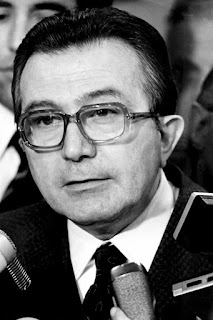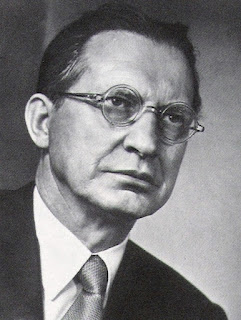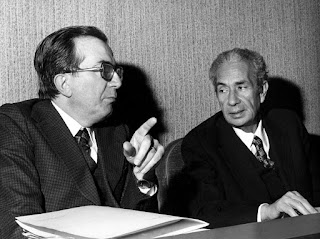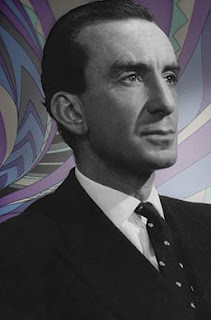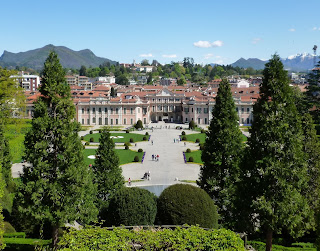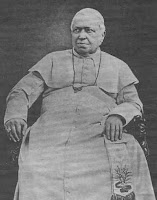Former Milan player steered Torino to only title in 68 years
 |
| Gigi Radici, whose coaching methods were inspired by the 'total football' of Dutch coach Rinus Michels |
An attacking full-back with AC Milan, where he won the Scudetto three times and was a member of the team that won the 1962-63 European Cup, Radice made five appearances for Italy, including two at the 1962 World Cup finals in Chile.
He switched to coaching in 1965 after a serious knee injury ended his playing career prematurely and achieved immediate success with his local club, Monza, whom he guided to promotion as champions in Serie C.
After leading Cesena to promotion to Serie A for the first time in the Emilia-Romagna club's history in 1972-73 Radice had spells with Fiorentina and Cagliari before Torino owner Orfeo Pianelli hired him in 1975.
 |
| Stadio Comunale, now the Stadio Olimpico Grande Torino, has been the home of Torino for much of the club's history |
Crucially, Torino beat Juventus in both of the season's derby matches, each played at the shared Stadio Comunale. Radice's team won 2-0 as the 'home' side in December and by the same scoreline in the return fixture in March, the two games watched by a total of almost 120,000 spectators.
Radice had a reputation for taking a tough, no-nonsense approach with his players that earned him the nickname 'the Iron Sergeant' and sometimes 'the German.' On the field, his Torino teamed played at a high tempo, pressing their opponents all over the pitch as Radice tried to implement the so-called 'total football' created by the Dutch coach Rinus Michels, of whom he was a great admirer.
 |
| Paolino Pucci with the trophy he won as Serie A's top scorer in 1975-76 |
For Pucci, who spent 15 seasons with the club, ending his career as Torino's all-time record goalscorer with 172 goals, it was the best season of his career, bringing him 21 Serie A goals.
Radice achieved two more top-three finishes before leaving the club in 1980, a year after he had suffered serious injuries in a road accident. He returned for a second spell in charge in 1984, again achieving success at the first attempt when Torino were runners-up to Verona in 1984-85.
He moved on again after Torino were relegated in 1989 and his coaching career never again reached the same heights, although his Fiorentina's team were second at the half-way stage in the 1992-93 season before a row with the club's chairman, Vittorio Cecchi Gori, cost him his job.
He retired at the age of 63, having returned to his first club, Monza, where he ended on a high note by winning promotion to Serie B. Now 82, he still lives in Monza. His son, Ruggero, one of three children, followed him into football and was a member of the Siena team that won an historic promotion to Serie A in 2003. He now coaches in the youth section at the Tuscan club.
 |
| The black and white marble facade of the Duomo in Monza |
Cesana Maderno is a town of around 35,000 inhabitants situated about 15km from Monza, the Lombardy city best known for its motor racing circuit, which has been the home of the Italian Formula One Grand Prix every year bar one since 1950. The city has other attractions, including a 14th century Duomo, built in Romanesque-Gothic style with a black and white marble facade, and the church of Santa Maria in Strada, also built in the 14th century, which has a facade in terracotta. The Royal Villa, on the banks of the Lambro river, dates back to the 18th century, when Monza was part of the Austrian Empire.
Travel tip:
Although the home of Italy's former royal family and the first capital of the modern Italy, its architectural style gives Turin a different look from most Italian cities. Dominated by Baroque palaces and churches built when Turin was part of the Kingdom of Savoy, it is sometimes called 'the little Paris' on account of the wide boulevards and white buildings that are typical of the French capital, of which the elegant 19th century cafes in the city centre are another echo.
More reading:
Nevio Scala - the coach behind Parma's golden era
Claudio Ranieri - the man who made the Leicester miracle happen
The Torino winger who became the world's most expensive footballer
Also on this day:
1926: The death of Giambattista De Curtis, songwriter who penned 'Torna a Surriento'
(Picture credit: Stadio Comunale by Peter Collins; Monza Duomo by Scruch)
(Picture credit: Stadio Comunale by Peter Collins; Monza Duomo by Scruch)
Home
